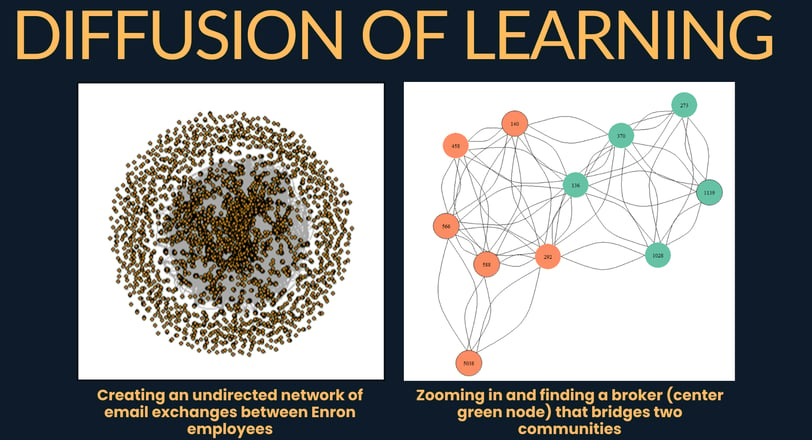

Insights
Structural position (e.g., high betweenness) may predict learning spread better than job title or training participation.
Most brokers were central to dense network clusters, showing that informal learning diffusion is socially embedded, not random.
Methods + Approach
Using a network analysis of over 180,000 email exchanges from Enron public records, this project identified individuals best positioned to spread learning, not just receive it. Betweenness centrality was used to detect “learning brokers,” or employees structurally poised to bridge teams and move knowledge across the organization.
Primary Skills Applied: Social Network Analysis (SNA) | Statistical Analysis | Data Cleaning | Literature Review
Problem
Formal training often misses how learning actually spreads at work. Informal learning (through peers, conversations, and collaboration) is invisible to most L&D systems. Without understanding how knowledge diffuses, organizations risk wasting time and resources on training that doesn’t scale.
Potential Applications
Organizations can boost the reach of learning by training the right people. L&D teams should incorporate network data to:
Identify internal “connectors” for peer-led learning
Try shifting from delivery to diffusion as a metric of success
Limitations
Structural ≠ Influence: Betweenness shows potential to spread learning, not willingness, trust, or credibility.
Fairness & Workload Risk: Targeting a few brokers could create resentment or overload if not supported.
Data Limits: Emails don’t guarantee learning, only interactions.
Tools Used: R | Gephi
